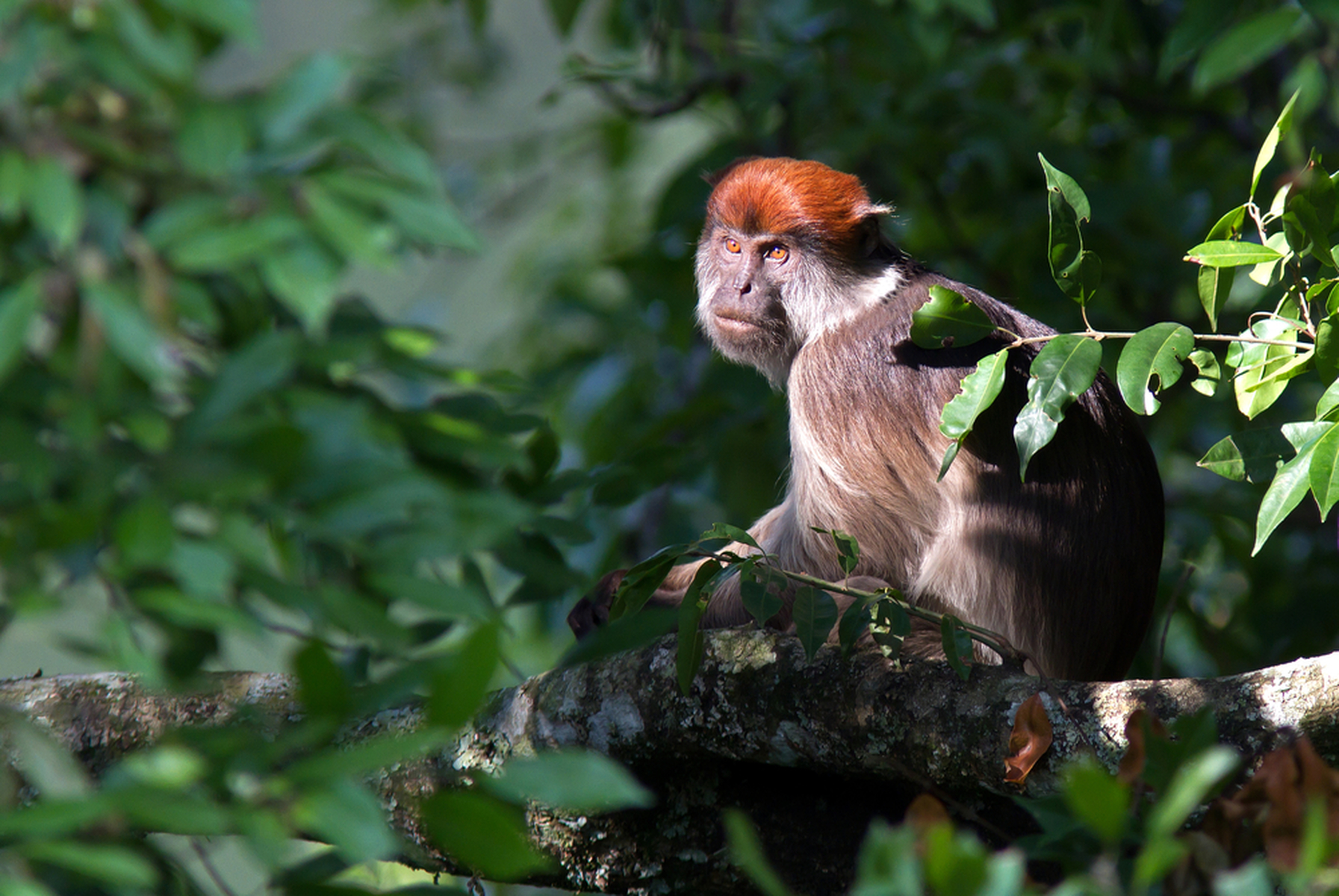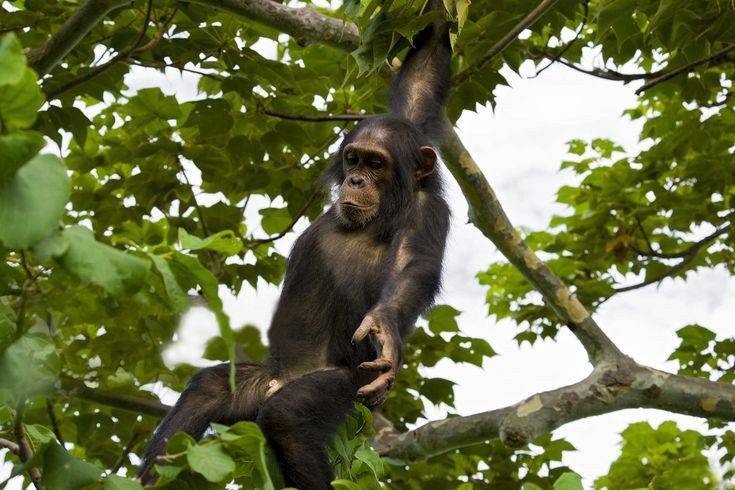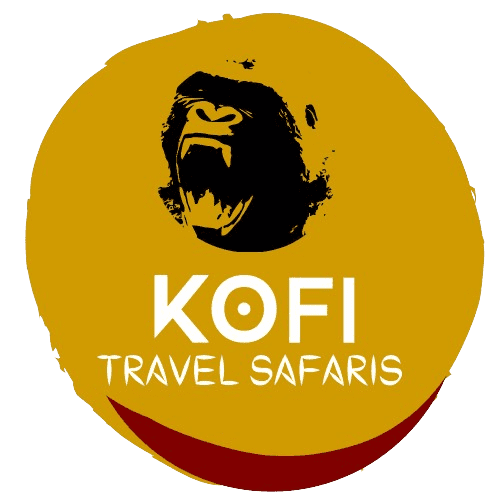Kibale national park is mainly covered by a tropical rainforest and is famous for chimpanzee trekking safaris in Uganda and the largest number of primates in East Africa thus its nickname the “Primate capital of the world”. The protected forest region known as Kibale National Park was first formed in 1993 after being gazetted in 1932 as a logged forest reserve.
Kibale national park is located in western Uganda Kabarole district near Fort Portal city which also dubbed the “Tourism city”. The evergreen protected tropical rainforest covers an area of 766 sq Km, on an altitude of 1,100 – 1,590m above sea level of alluring landscape scenery and biodiversity. Kibale national park is joined to Queen Elizabeth national park in the south by a 180km wildlife stretch to allow animals move between the two parks.
Kibale forest is home to a number of biodiversity which include 350 plant species, 71 mammals like leopards, forest elephants, Bush pigs, warthogs, golden cats, and forest buffalo. In comparison to animals in savannah parks, which are typically swarming with people, animals in the forest are typically timid, more aggressive, and rarely seen. If you’re lucky, you might see a few elephants, buffaloes, or bush pigs, but more often than not, all you’ll see are their tracks because these animals prefer to flee when they notice movement in the forest.
Kibale forest is also home to 13 primate species which is the highest number for any Ugandan park, they include over 1,450 chimpanzees, bush babies, L’Hoest’s monkey, red colobus monkey, red-tailed monkey, black-and-white colobus monkey, grey-cheeked mangabey, olive baboon, blue monkey, Vervet monkeys and Potto. There are around 370 species of birds hosted in this forest, including 23 Albertine Rift endemics. The Nahan’s francolin, cassin’s spine tail, blue headed bee-eater and low-land masked apalis.
The majority of visitors to Kibale National Park do so to participate in chimpanzee trekking and chimpanzee habituation experiences, which are the main attraction of the forest. It is without a doubt the greatest location in East Africa to spot chimpanzees. Since 1994, guides and tourists have been tracking habituated chimpanzee groups through the damp forest of Kibale, with generally positive results. The chimpanzees have been habituated for over 26years thus accept human presence.
Since 1993, the Kanyanchu community has been the recipient of daily tourist tracking. Every day at 8:00hrs in the morning and 14:00hrs in afternoon, chimpanzee trekking trips depart from the Kanyanchu tourist center. These explorations take, on average, three hours. It is advised to arrive early to provide time for registration and briefing. Participants must be 16 years of age or older; contact time with chimpanzees is limited to one hour; group size is restricted to six tourists. Because it can rain at any moment in a tropical jungle, you should be prepared to walk for long distances and have a rain coat. Binoculars, a camera, bug repellent, suitable waterproof boots, and long-sleeved clothing are additional necessities.https://ugandawildlife.org/national-parks/kibale-national-park/
In Kibale, a chimpanzee trek permit costs $1500 in the high season and $100 in the low. The Kibale National Park also practices chimpanzee habituation, and visitors may spend longer time there—up to a whole day or six hours—with the chimpanzees. Booking ahead is required.

Other Activities In Kibale National Park
Kibale Forest Hikes | Walking Trail
You may explore the park’s many ecosystems, such as the river line forest, marsh, grassland, and tropical rainforest, on hiking tours. Nature walks last 2.5 hours and start at 7pm. Visitors to the park may learn about some of its inhabitants through the nature trails, which include animals like duikers, forest pigs, butterflies, and a variety of lush vegetation. There are several species of reptiles and amphibians as well.
Night walks are another alternative for viewing the nocturnal when the other forest dwellers are sleeping. The rangers target nocturnal animals including bush babies, hyrax, potto, and even serval cats and civets using strong torches. In Magombe Swamp and on forest trails, visitors must be accompanied; elsewhere, they are free to wander without a guide. Guided forest walks in Kibale cost USD 30/40 Day/Night, excluding the park entrance.
Birding safaris In Kibale national park
The park is home to 325species of birds including 6 of the Albertine rift endemics. Species include the Green breasted pitta, Grey-throated Flycatcher, Grey-winged Robin, Crested Flycatcher, Blue shouldered Robin Chat, Yellow-spotted Barbet, Black-billed Turaco, White-naped Pigeon, Red-chested Fluff tail, White-collared Olive-back White-bellied, Masked Apalis, Nahan’s Francolin, Tiny Sunbird, and many more. All year long, visitors may go on birding safaris in Kibale. As with all other park activities, they will be supervised by one of our knowledgeable ranger guides. Bird walks in Kibale Forest begin at 7 a.m. every morning, but you must reserve early so the rangers can be ready for you.
Best Time to Visit Kibale national park
The drier months of December to February and June to July are best for chimpanzee trekking. However, you can still go looking for the primates in the wetter months (March to May and August to November), which have the added attraction of low-season prices and lower tourist volumes.
Accommodation at Kibale national park.
Kibale national park offers a wide range of accommodations ranging from Luxury, to midrange and budget lodges both within the park and outside the park/ park borders. Some of the lodges offered when you visit Kibale National Park include:
- Primate Lodge Papaya Safari Lodge
- Ndali Lodge
- Kyaninga Lodge
- Mountains of the moon Hotel
- Turaco Treetops
- Chimpanzee Guest house
- Kibale forest camp
- Isunga Lodge



